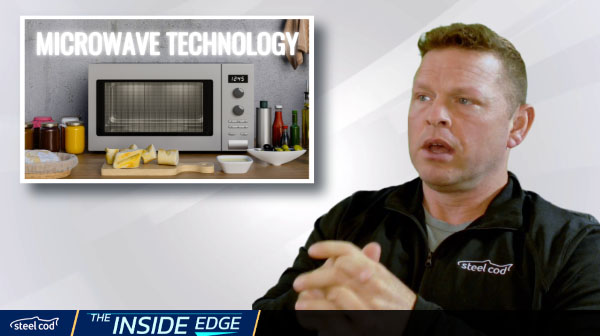Microwave Myths Exposed
Why They’re Not All the Same
Microwave Myths Exposed
Microwaves are always bought on price — because no one has ever told customers why they shouldn’t. Wattage, sensor cooking, and inverter technology completely change performance. We’re breaking down how these features impact daily use and why selling beyond price is easier than you think.
Microwave Myths Exposed
This week Jon, Anthony and Tom talked more about inverter technology -- what it is and what it isn't -- and their earliest microwave memories. Grab your popcorn for this one!
Documentation
Recap
Key Questions and Answers
Do different brands measure microwave wattage the same way, or can a 1000-watt model from one brand perform differently than another?
Wattage is measured based on power output, but efficiency varies by brand due to differences in magnetron quality, wave distribution, and cavity design.
How does the shape and size of the cooking cavity impact how wattage is used?
Larger cavities require more energy to heat food evenly; a small microwave may feel “stronger” despite having the same wattage.
If a microwave is underpowered, does it just take longer to cook, or does it also impact food quality?
Lower-wattage microwaves don’t just slow cooking — they affect texture. Foods may become chewy, rubbery, or unevenly heated due to longer exposure to intermittent heat rather than rapid, uniform cooking.
Do all sensor cooking technologies work the same, or do some brands have better sensors than others?
Not all sensor systems are created equal.
High-end brands use multiple humidity sensors and advanced algorithms to adjust power levels dynamically, reducing overcooking.
Lower-end models may use basic timers triggered by moisture levels, resulting in less precise cooking.
Are sensor cooking results affected by the type of dish a customer is using (glass vs. ceramic vs. plastic)?
Yes—material choice impacts heat retention and sensor accuracy.
| Material | Characteristic | Result |
|---|---|---|
| Glass and ceramic | Better heat retention | More even cooking |
| Plastic | Block or distort sensor readings | Inaccurate auto-cook times |
How do microwaves with humidity sensors adjust for different types of food on the same plate?
Advanced humidity sensors detect rising steam and adjust cooking time based on moisture release.
Some brands use multi-zone scanning to detect different food types, but most base adjustments on the dominant moisture source (usually the wettest item on the plate).
Covering foods differently (e.g., vented lids for steamed vegetables, open plates for crisping) can help sensors work more accurately.
Is there a downside to inverter technology? Does it require more maintenance or cost more to repair?
Inverter microwaves use continuous power instead of pulsing, leading to better cooking results.
However, there are some potential downsides:
- Higher cost
- More complex repairs
- More sensitive electronics
Repairs can be 25-40% more expensive due to the advanced circuitry compared to standard transformers.
Customers often say they “just need a basic microwave.” How do I pivot that conversation to show them real value?
“Basic” is a placeholder—ask what they actually need. Do they reheat coffee or cook full meals? Do they care about even heating or speed?
Highlight key differences:
- Standard models may require stirring, flipping, or adjusting power levels manually.
- Sensor-equipped and inverter models eliminate guesswork, reduce hot spots, and prevent overcooking.
- Lower-wattage models struggle with dense foods, while higher-wattage and inverter models handle them smoothly.
- Compare lifetime value: a cheap microwave may underperform for years, while a better model saves time and improves food quality daily.
What’s the main reason some manufacturers still use traditional pulsing power instead of inverter technology?
Cost and simplicity. Traditional pulsing power requires fewer components and has a longer track record of durability.
Some manufacturers prioritize affordability and reliability over advanced cooking precision.
Inverter technology is more expensive to produce and repair, making it less common in entry-level models.

